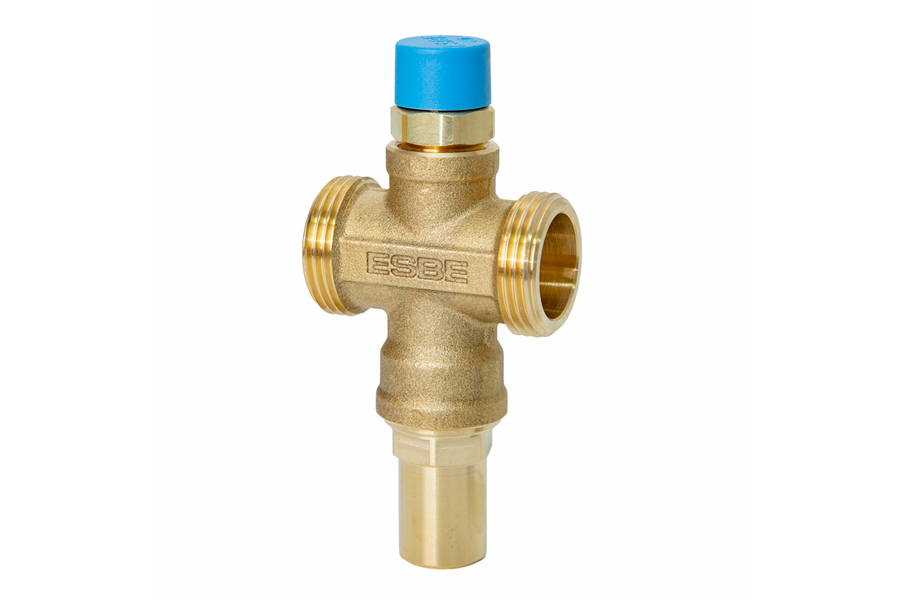Gale & Snowden specified alsecco’s Basic 1 external wall insulation system for the construction of 14 Passivhaus units in Exeter. Following on from the success and lessons learnt on a previous scheme, Exeter City Council commissioned the architects, who are Passivhaus Trust members, for this project. The project won the Domestic New Build category in the recent INCA (Insulated Render and Cladding Association) Awards, recognising excellence in design and innovation.
The development of Brookway and Bennett Square is the Council’s second programme of council-owned builds in Exeter and form part of an on-going strategy to build more council homes to address fuel poverty in the area. The properties have been built on infill sites making use of areas of land not presently being utilised.
Gale & Snowden Architects designed the properties to the Passivhaus Standard adopting a fabric-first approach whilst also addressing the issue of fuel poverty and the need to ensure resident’s fuel bills would be kept to a minimum. Built by main contractor Interserve, the new homes will be let to families in need, with three of the new properties having full wheelchair access.
Since the Passivhaus concept was established in the early 1990s it has been consistently refined and has become the world leading standard in energy efficient design and construction. Today more than 20,000 buildings including dwellings, schools, offices and sport halls have been built to the Passivhaus standard.
Detailed research and scientific monitoring on these projects have proven that using the Passivhaus methodology will reduce the energy demand of a building by up to 90% of that of a standard UK building (if built to current Building Regulation requirements). In other words a Passivhaus could be heated by the equivalent of 1.5 litres of heating oil, i.e. 15 kWh of thermal energy per m2 per year, or 60p per m2 per year (based on a price for heating oil of 40p a litre) without compromising on comfort or indoor air quality.
This is typically achieved through high levels of insulation, exceptional air tightness, high performance windows and doors and highly efficient mechanical ventilation heat recovery. To achieve the Passivhaus Standard the actual performance in terms of comfortable levels and energy efficiency needs to be calculated during the design process, prior to construction. The performance includes thermal comfort (during winter and during summer), indoor air quality and energy consumption.
The Basic 1 system for this particular project incorporated 250mm of grey expanded polystyrene above the DPC and 250mm extruded polystyrene below the DPC and was installed to the exterior of the medium density blockwork construction. A Silitect top coat was used to complete the installation and finished in three shades of red on some properties and cream on the others, making for a striking visual appearance of the blocks as a whole.
The architect specified the alsecco external wall insulation system as it eliminates the danger of interstitial condensation and thermal bridging since the insulation is on the outside with the thermal mass of the block work retained on the inside.
Specialist EWI installer PRS Group installed the external wall insulation system. The exacting installation of the EWI is very important ensuring that the insulation is fitted in a continuous manner, leaving no gaps between the panels. It is important that the insulation panels have square edges to ensure there are no gaps, therefore insulation panels had to be protected during transportation, storage and also when handling during installation
With a U Value achieved of 0.12W/m2K, residents will realise huge savings on their fuel bills approximately one-tenth that of a traditionally constructed home. As well as being energy efficient, the Passivhaus homes create thermal comfort ensuring a more comfortable, healthy and ambient indoor climate.
A particular design and environmental feature was the installation of 15kg bat boxes to the gable ends of the blocks. alsecco identified that standard fixings could not be used to install the boxes as it was essential to avoid cold bridging, therefore the boxes were installed using the Dosteba fixing method.
David Gale, Gale & Snowden Architects commented, “Our design focussed on a fabric first and optimal orientation approach based on Passivhaus principles to first minimise the energy demand of the building, reducing its carbon emissions, before adding renewables where appropriate. The result is a low-carbon solution that responds to a changing climate and tackles fuel poverty at the same time.
By incorporating Building Biology healthy design principles in to the design from the outset, the building can provide an uplifting and life-enhancing environment. Building Biology is the holistic study of the man-made environment, human health and ecology.
The developments at Brookway and Bennett Square therefore incorporate a range of measures to ensure a healthy and comfortable internal environment including such features as organic paints and stains with low or no toxic Volatile Organic Compounds (VOCs), radial electrical wiring designed to reduce the amount of electro-magnetic radiation and easily cleanable surfaces with no fitted carpets which can harbour dust mites, to name but a few.”
The properties also incorporate further energy efficiency measures to achieve the Passivhaus Standard including triple glazed windows to complete the airtightness and insulation of the envelope. Each house will also have a mechanical ventilation system to ensure there is sufficient air in the property while at the same time ensuring the heat is not lost by using a heat exchanger.
Emma Osmundsen, Housing Development Manager & Client Lead (Build), Exeter City Council, added “We offer on-going guidance and training to residents of our Passivhaus developments to ensure that they live in the properties in an optimum way thus ensuring they realise the cost benefits associated with living in this type of property.”
As well as providing a low-carbon solution that tackles fuel poverty, the homes have been designed to mitigate against future climate change up to 2080.
For more information on how alsecco’s external wall insulation system can help you achieve the Passivhaus Standard, contact us on 01785 818998 or email technical@alsecco.co.uk, www.alsecco.co.uk.




















